Mild-mannered reporters by day, Greg Phillips and Nick Duke share an intense love of comic books that has made them the Hard-Traveling Fanboys. But with that love of comics and the characters they feature comes an intense interest in the various adaptations that have been made of comic characters. Each month, in Off the Page, the Fanboys will take a look at a piece of comic-inspired media, whether that be a movie, television show, live performance or even a radio drama.
Nick: We’re back once again, dear readers, to take you through one of our many cinematic journeys in the world of comic books. This month, we’re going to be talking in depth about a movie that we’ve discussed here and there before – “Green Lantern.” So sit back and try to enjoy, because this might be one of our longer, bumpier columns yet.
Greg: It’s a sad day for the trusty ol’ Fanboys. We’ve arrived here in Off the Page at a project we hoped never to discuss. It’s a major motion picture that the two of us spent most of 2010 and early 2011 salivating over. Finally, we got a chance to see some of our most beloved characters — Hal Jordan, Sinestro, Carol Ferris, Kilowog and on down the line — brought to life.
Unfortunately, things didn’t work out quite the way we (or the studio) hoped. In case there’s any confusion, we’re reviewing the “Extended Cut” Blu-Ray edition of the film. Does the extra footage add to the film’s quality? Eh.
Nick: I’d argue that it doesn’t. The problem with the extended cut’s extra footage is that 95 percent of it seems to come in the first 20 minutes of the movie in the form of one sequence featuring Hal Jordan and his father at Ferris Air. The reason it adds nothing is that once the sequence wraps up, we move into the present day and five minutes later, we’re flashing back to footage we just saw.
Greg: About the only substantive aspect of the additional footage is that we actually see that Hal, Hector and Carol all knew each other as kids. In the theatrical cut, it’s not made clear why or how Hammond and Jordan know each other. Poor editing was a theme of both cuts of the movie, but that was especially jarring in the theatrical cut.

Nick: But, first let’s talk a little bit about that buildup you referenced. What ultimately made GL so mind-numbingly disappointed was the fact that all the pieces seemed to be in place leading up to its release.
Geoff Johns, our beloved scribe who deserves most of the credit for forging our love of the character, was producing. Martin Campbell, director of two of the finest James Bond movies the franchise has to offer, was sitting in the director’s chair. Michael Clarke Duncan voicing Kilowog and Geoffrey Rush voicing Tomar-Re were bits of pure fanboy-pleasing casting. Sure, there was the debate over Ryan Reynolds, which we’ll get into in a minute, but for the most part, all signs seemed to be positive.
Greg: And as the months approached, we kept getting more and more morsels from Johns and others associated with the film. Everything, it seemed, was going to be great. Reynolds even impressed us by reciting the oath at Comic-Con International to a young Green Lantern fan. Our hopes, a few months out from the film, were pretty high, even after some shaky trailers.
Nick: Even the initial trailers, while they had some shaky CGI, seemed to be pointing towards a story that would honor the character and set the stage not just for a new GL film franchise, but early rumblings were that DC was planning to build its cinematic universe on the back of GL’s near-assured success. A sequel was greenlit before the film ever hit theaters, reportedly because of overwhelmingly positive test screenings. Could Green Lantern be DC’s version of Marvel’s 2008 Iron Man film? It seemed so.

But then the week of the film’s release arrived, and the first reviews started leaking online. They were mixed, and I found myself, for the first time in history, actually caring what a movie’s “Tomatometer” looked like. I tried to rationalize the mixed reviews. Critics just didn’t “get it,” I told myself. It would play great to fans, I said. I had no idea.
Greg: The first sign that things may not be as staggeringly great as we hoped (and, given the concept, they should have been) was an embargo on advanced reviews.
Nick: Eventually, the release date arrived. I remember attending a midnight screening with two other fairly hardcore GL fans. Greg, did you catch a midnight showing? I can’t remember your first exposure to the movie.
Greg: I watched it opening weekend with fellow PTBN writer Maurice Pogue and his family. To say I was nervous would be an understatement. I spent the entirety of the pre-movie festivities explaining to Maurice and his wife exactly why Green Lantern was my favorite comic book concept and how awesome the movie should be. “It’s Star Wars meets Lord of the Rings with a little James Bond thrown in,” I told them. In hindsight, perhaps I was trying to convince myself of what the movie would be before I’d even seen it.
Now is probably as good a time as any to explain what I love the most about Green Lantern. It isn’t the fact that he/they is/are superheroes. It isn’t punching out bank robbers or fighting guys with guns. It’s a group of space cops working together and wielding the most powerful weapons in the universe. I can’t emphasize that enough: SPACE COPS. All I really wanted from the movie was a good version of Hal’s origin and some badass space scenes involving the Corps.
Nick: Yep, what makes the Corps stand out is how different they are from so many other heroes. There isn’t just one Green Lantern (well, not usually anyway) and they serve as part of something larger than themselves, meaning they have to strive to represent the corps well at all times. There’s an inherent sense of responsibility that comes with the ring, and as Greg said, the setting is also huge. We have hundreds of earth-based heroes. While GL can certainly kick ass on Earth as well as anyone else, it’s his Star Wars-type space adventures that drew me into the character in the first place.
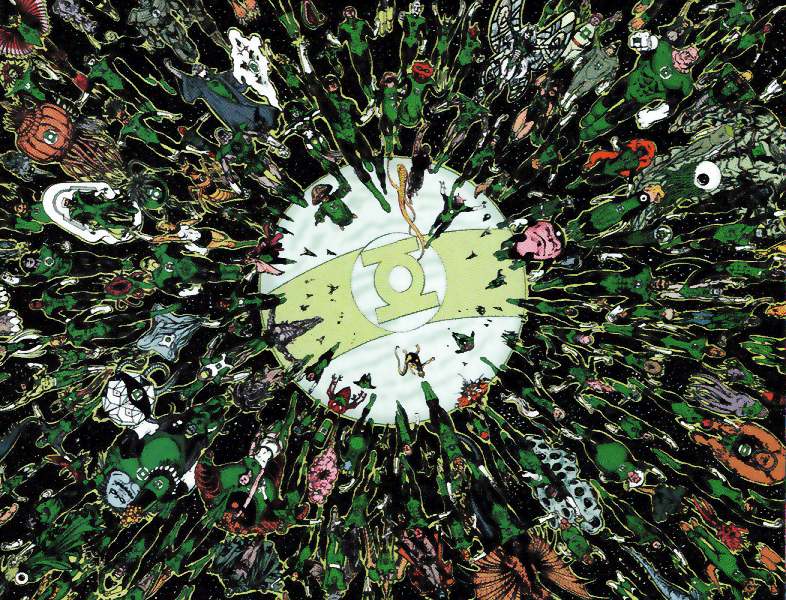
But that wasn’t exactly what we got, was it? The movie came and went, and I remember walking out of the theater with a very hollow feeling. It wasn’t that the movie was bad. As we’ll discuss, there were plenty of positive elements, but for every step forward, there were two steps back. It was truly my most disappointing experience I’ve had in a theater.
Greg: Oddly enough, I left the theater saying, “Hey, it could’ve been worse.” I think I was temporarily blinded by the euphoria of seeing Hal Jordan and Sinestro on the big screen, or seeing the stunning Oa training sequence.
While GL may not have the extensive rogues gallery of someone like Batman, Spider-Man or the Flash, the joy of Lantern books is often meeting strange new alien races. From the Spider Guild to the Khund and everything in between, it helps flesh out the cosmic side of the DC Universe and, this can’t be stressed enough, helps make Green Lantern a unique concept in a world littered with crimefighters.
Nick: It should have been unique, but what we got was a generic, forgettable attempt.
Greg: Only on every subsequent rewatch did it become apparent just how badly Warner Bros. and Martin Campbell missed the mark with the project. For starters, the overwhelming bulk of the story takes place on Earth. That’s somewhat akin to Marvel introducing the Guardians of the Galaxy with a film set entirely in New York City.
True, we get some really good scenes on Oa. However, most of the film takes place in Coast City. That’s fine for a later movie, but when this is your one chance to show people why Green Lantern is cool and different, it’s a huge mistake to instantly try to make him just like every other hero. Let’s see, there’s a flawed normal guy who gains powers. Then he tries to impress a love interest who he keeps unwittingly pushing away. And finally he learns to become a hero when a new foe threatens to destroy his city/the planet.
That could be any number of big-screen heroes, and audiences were left yawning as they saw just another addition to that growing pantheon.
Nick: And it isn’t just the paint-by-numbers nature of the story. It’s that even a generic superhero film was so badly executed by the creative team involved. From the getgo, we get fairly cheesy, hamfisted flashbacks to Hal’s father’s fiery demise and we are introduced to the film’s main threat, Parallax.
Now in the comics, Parallax is the living embodiment of fear and he usually takes the form of a giant cockroach-like being. Here, he’s a cloud of swirling diarrhea with an oversized, misshapen head.
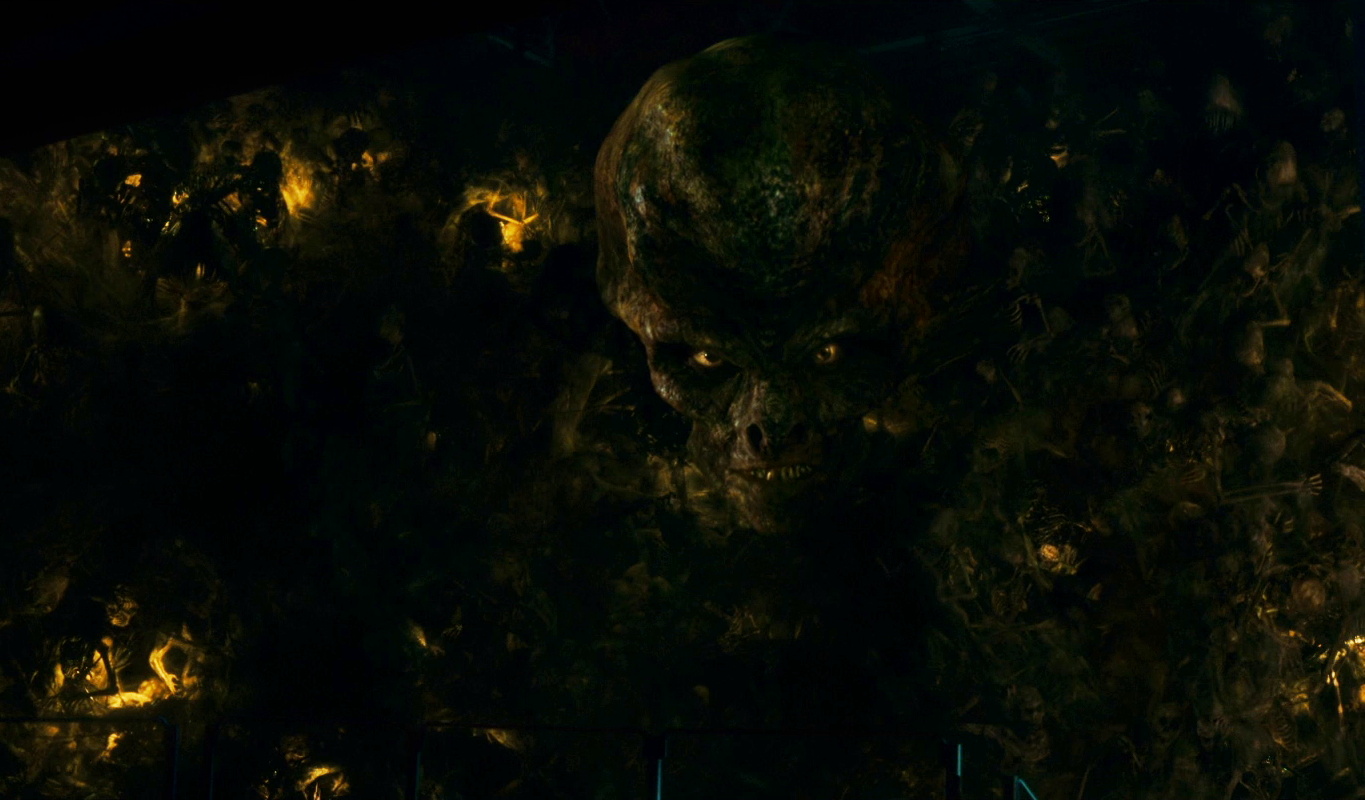
We’re also introduced to Blake Lively’s Carol Ferris fairly early on and from the first moment she’s one screen, her dialogue is forced, her delivery stilted and wooden, and her facial expressions just terrible. Beyond all that, even if she had given a better performance and the dialogue was better, the Carol of the film seems to have practically nothing in common with the Carol of the comics. Carol Ferris is supposed to be one of the strongest, most independent female characters you’ll ever find. Here, she was nothing more than a damsel in distress.
Greg: Let’s start with Parallax. In addition to being given the Galactus-in-the-Fantastic-Four-movie treatment, the embodiment of fear is, for reasons that elude me, combined with another Green Lantern villain from the comics, Krona (a.k.a. the Mad Guardian). While the Parallax of the comics is literally sentient energy, this is a former Guardian who sought to harness the power of fear only to be consumed by it.
It’s a convoluted introduction to an already difficult-to-explain character.
Nick: Making it even more problematic is that Krona is never mentioned by name, leaving fans to make assumptions about Parallax’s initial identity. Parallax also only speaks in generic monster villain cliches. “I will destroy you all!” And so on and so forth.
Greg: As for Carol, you hit the nail on the head. In the comics, she’s just as headstrong and confident as Hal. Here, she’s a whimpering, emotionally volatile stock character. While some of the scenes between the two characters are tender, most come off as Hollywood clichés. The actual performance from Lively fails to live up to her last name.
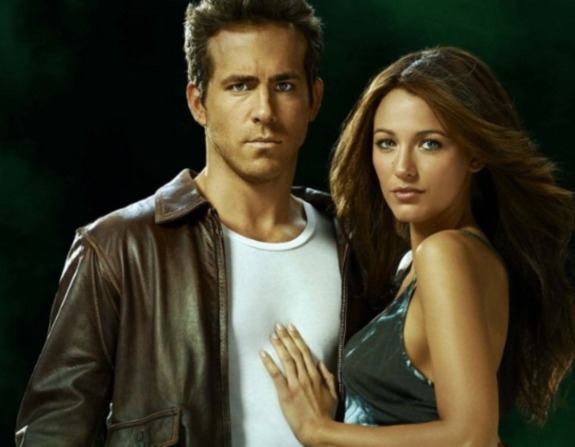
Nick: Parallax is initially drawn to Earth after the Green Lantern he was chasing, Abin Sur, crash lands there. We’ll pause from our lambasting of the movie here to present one of the aforementioned positive elements: The depiction of Abin Sur, his fate and the way he is mentioned by other Corps members with such a reverential tone provided viewers, I felt, with a perfect idea of who Abin was and why his death mattered so much, despite the fact that he’s on screen less than seven minutes total.
Greg: Abin is every bit the cool, collected and revered Lantern he is supposed to be. The sequence in which Parallax attacks Abin’s ship is particularly well realized, and it’s one instance of the CGI holding up really well. That isn’t the case in other parts of the film, but Abin’s escape is suitably thrilling, as is his initial encounter with Hal.
Nick: Like you just said, the portrayal of Abin enables the filmmakers to have another positive element: the introduction of Hal to Abin and the ring was well done, I felt, and was familiar enough to the comics while still being able to be viewed as its own interpretation.
Greg: I had no real issues with Hal’s origin here. The film establishes Hal’s personality and psyche, we get the fateful meeting with Abin, and Hal’s loyal friend Tom Kalmaku is given a vital role as the one person (at least initially) that knows Hal’s secret. It’s well handled, and the humor is well placed through the process.
Nick: It’s after Abin’s crash that we’re also introduced to the film’s secondary antagonist — Hector Hammond. This is a divisive element for many, but Peter Saarsgard’s portrayal of Hammond worked for me. Hector was just off-beat, awkward and occasionally creepy enough before he receives powers that his eventual descent into madness was easy to accept. Those powers, you ask? Some sort of telekinesis and telepathy given to him by virtue of coming in contact with an infected piece of material lodged in Abin’s skin. The implication is that Parallax is the cause, though I found myself wondering why exposure didn’t give Abin new telekinetic powers.
Greg: Hammond is one of the creepiest characters in the DC Universe, so I bought in 100 percent to Saarsgard’s portrayal. He really lent the sort of sad desperation to the character that has become his hallmark in the comics.
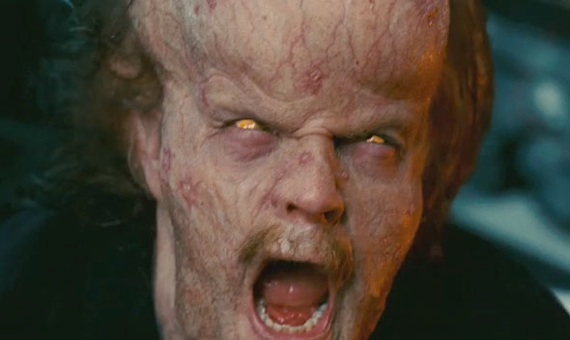
I really, really hated mixing the Parallax and Hammond concepts, though. Why did exposure to Parallax cause Hammond to A) develop telekinesis and B) grow a large head? It’s never really explained, and there had to be another way to show Hammond gaining his powers. True, combining the concepts is the easier (lazier) route, but maybe they could’ve just established Hammond as the awkward scientist here and stuck with just one primary villain instead of two?
Nick: If you count the implied inclusion of Krona, you have three villains from the GL pantheon used in one film. And not just one film, but the first film, which should have dealt with establishing Hal first and foremost rather than throwing villains in.
Anyway, as Hector begins to show signs of changing, Hal is whisked away to Oa for what I consider to be the film’s best sequence by far. Hal is introduced to the history of the Corps by Tomar-Re, trained in combat by Kilowog and lectured on the importance of his ring’s legacy by Sinestro.
Everything that happens here makes sense and is in line with the true nature of these characters. The problem is that the sequence works so well, yet ends after only 10 or so minutes. We’re led to believe that Hal comes to accept the existence of the Corps and the Guardians of the Universe and also masters the use of the ring in this time. Kilowog, the GL equivalent of a drill sergeant, is only used here and Hal gets the better of him after only a few ring exchanges. Granted, the fanboy in me would have preferred the slow burn, but I honestly feel like Hal learning to master the ring should have been an entire movie in and of itself.
Greg: It’s an excellent scene or two. In fact, everything that takes place on Oa is great. The characterizations of Tomar, Kilowog and Sinestro are on-point, and it’s the one sequence in the film that has the “wow” factor of the comics. Like Hal Jordan, I found myself audibly gasping when seeing these larger-than-life concepts for the first time. The central power battery, the Guardians’ citadel, the army of Lanterns — it’s all beautiful.
And like you, the wonder of those scenes only made the rest of the film that much more disappointing. It’s so obvious what this movie could have been. Yet instead of focusing on these strange alien creatures (which, I’ll note, the kids in the audience at my first screening found the most interesting), the filmmakers opted to go back to Earth and show more of the mundane, ho-hum superhero theatrics done earlier and better by films like “Iron Man” and “Batman Begins.”
Nick: Yeah, that scene where the entire Corps assembled to listen to Sinestro’s speech was pure fanboy nirvana. Too many Lantern cameos to count. Sadly, this is pretty much where the positive elements end. Once Hal takes off for earth, the movie completely and totally goes off the rails.
Greg: If it sounds like the film’s confusing, that’s because it is. Cramming two (or three) major villains, no fewer than seven prominent characters and a brand new superhero into one movie is just too much.

And it’s done no favors by the film’s biggest problem: some of the worst editing I’ve ever seen on a major motion picture.
Nick: It’s during the film’s second half that most of the editing woes come into play. Characters disappear, reappear and draw connections that the audience is given no indication they had the knowledge necessary to make. There are scenes where Hal’s ring flashes and Hal stares at it for prolonged periods of time. According to rumor, the initial script had dialogue for the ring to speak to Hal, yet the dialogue was never added in post production.
For example, once he returns to earth, Hal attends an upscale Ferris Air party, despite the fact that he’s been suspended and grounded. There is no indication of any reduction of those penalties, so his attendance makes little sense. It’s at this party that we see Hal and Hector on screen together for the first time in the theatrical version. The extended cut establishes that the two have known each other since childhood, but when the two encounter each other for the first time in the theatrical cut, they start talking and recognize each other despite there being no indication that the two have ever been connected.
Later, once Hector has gone full out evil and Hal has embraced his heroic role, we get a scene of Hal, Carol and Tom Kalmaku discussing what Hal should do about Hector and Parallax. Fair enough. BUT THE VERY NEXT SCENE shows Carol being held by Hector in what appears to be an airport hangar. Then, Hal comes busting through the wall. OK, but how did Hector kidnap Carol? How did Hal know Carol had been kidnapped? How did Hal know where Hector was? None of this is explained, and it’s just the prime example of poor editing in a movie where things seem to happen with no rhyme or reason.
Greg: One of the film’s most bizarre sequences happens before that, where Hal shows Carol his powers and new identity. In the span of one conversation, due to amateur-level editing, Carol appears to run the gamut of emotions with no real reason. She’s compassionate and tries to appeal to Hal’s inherent heroism while they’re sitting atop a wall for an impromptu date. The next scene has Carol giving Hal the cold shoulder when he returns her to her apartment. She’s suddenly furious with him for reasons that aren’t made clear. And the editing makes it appear as if this change in mood occurred in the trip from the date back to her apartment, completely off camera.
Nick: Man, I had forgotten about that scene. That might be a perfect example of how flawed this movie is. In one scene, we have examples of poor CGI, poor acting, poor writing and poor editing.
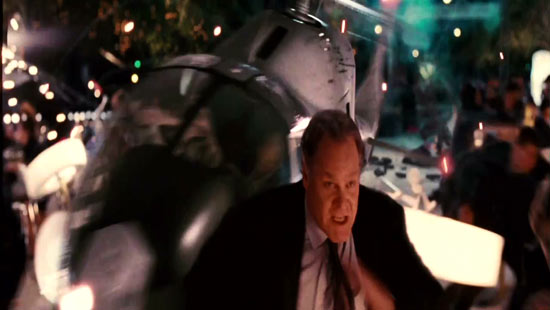
We should pause here to mention a background plot going on with Sinestro, who is attempting to convince the Guardians to allow him to wield the yellow power of fear in the form of a new yellow ring. While Mark Strong does an admirable job with the lackluster material he is given, there isn’t really any rhyme or reason to Sinestro being so willing to abandon the Corps’ primary tenants to fight a threat that the Corps has defeated in the past.
Greg: Strong’s great as Sinestro, imbuing him with a sense of heroism without a hint of the potential evil that comic fans know lurks deep beneath. I think Sinestro’s desire to wield the yellow ring, initially, makes sense due to Parallax wiping out Sinestro’s hand-picked strike force and the Guardians silently admitting that they believe the yellow energy to be stronger than willpower.
What doesn’t make sense is why, after Hal has beaten Parallax USING the green energy of willpower, Sinestro STILL decides to wield the yellow ring. I mean, fear just lost to willpower. Where’s the logic behind picking the losing weapon?
Nick: Ah yes, once Hal has defeated Parallax, saved the girl and earned the respect of his fellow Corps members, there comes a mid-credits scene where Sinestro retrieves the yellow ring and dons it for the first time. A cool scene in terms of visuals, as it shows the villain Sinestro will eventually become, yet one that feels completely hollow and unearned.
Greg: While I likely let out a high-pitched fanboy squeal when I first saw the scene, it’s truly empty without the proper build-up. It’s really out of left field.

Nick: Well, we’ve hit the overall plot of the movie. We need to address one of the primary complaints many had with the movie — the casting of Ryan Reynolds as Hal Jordan. Now, I could go into many different aspects of the performance, but I’ll keep it short. Reynolds gave a solid “B” performance. It wasn’t outstanding, but anyone who watches this movie and instantly jumps on Reynolds as a negative element is reaching too far down the list. Yes, it could have been better, but there were far worse things that needed to be fixed first.
Greg: You can often catch me in corners of the World Wide Web defending Mr. Reynolds’ performance. Watching it again recently, it’s even more apparent that, while he’s probably not the ideal Hal Jordan, he put his best effort into the performance. He’s got the cockiness of a fighter pilot while adding some of his trademark humor to the role.
It’s not exactly Christopher Reeve as Superman or Robert Downey Jr. as Iron Man, but in no way does Reynolds deserve the level of criticism he gets from many online. This wasn’t “Ryan Reynolds’ Green Lantern,” it was Martin Campbell’s Green Lantern. Reynolds loves the character, devoted a lot of time to reading books like Secret Origin and Rebirth, and truly showed respect to the mythos. He certainly shouldn’t be ranked with big-screen superhero duds like Nic Cage and George Clooney.
It’s just unfortunate he didn’t have great material.
Nick: Couldn’t agree more. There really are moments where Reynolds shines as the cocky, arrogant side of Hal. Sadly, there aren’t quite enough of those moments.
Another bit of casting we haven’t touched on yet is Angela Bassett as Amanda Waller. For those unfamiliar, Waller is kind of like DC’s version of Nick Fury, albeit her motivations tend to be a bit more nefarious at times. I remember both of us being so excited about the potential Waller’s inclusion had for setting up a DC Universe on film, but the version of Waller we got was not only underutilized, but a complete departure from her comic counterpart. Rather than Amanda Waller, we got “generic government employee.”
Greg: And there’s nothing more exciting in fiction than generic government employees, especially those wearing generic white scientist suits that appear to be straight from 1950s science fiction.
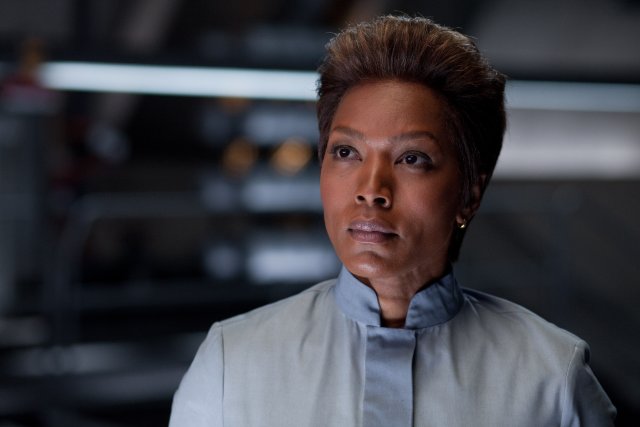
But yeah, Waller has no personality in the film. It’s as if she’s thrown in there just for fan service.
Nick: But fan service doesn’t work if you’re using the characters in name only. Not if you don’t have any good will built up with the audience, anyway. That wasn’t Amanda Waller, and it never will be DAMMIT.
Ugh. Is that it? Can it be over now?
Greg: I guess it can be over, but I’m not sure we’ve adequately addressed just how little Martin Campbell appeared to “get” Green Lantern as a concept.
Nick: Unfortunately, you’re right.
A good example is the aforementioned removal of the ring dialogue. Internet rumor holds that Campbell chose not to include the dialogue because he didn’t understand why the ring would speak to Hal.
So, let me get this straight…
You have a movie about an intergalactic police force…
Made up of officers who are inducted through a process that involves the ring, an inanimate object, choosing new inductees using unspoken criteria…
And the rings are powered by willpower, which for some reason takes on a green color…
And the power is collected in a giant battery before being beamed to individual smaller batteries…
And the entire structure was set up and overseen by blue aliens calling themselves the “Guardians of the Universe”…
Greg: And to activate the ring, you must recite an oath that rhymes in English …
Nick: And yet your biggest problem, the one thing you just can’t wrap your head around or suspend your disbelief on, is that the ring talks? Seriously? I try not to curse too much in these columns, but come on! What the fuck, man?

Not to mention the fact that they mention on screen that the ring is capable of translating alien languages into the bearer’s native language.
More Internet rumor would have you believe that Geoff Johns was there all along trying to provide sound advice and save the movie, but Campbell just didn’t get it. I don’t know if that’s true, but given the finished product, it’s not that far outside the realm of possibility.
Greg: It’s weird. I thought Campbell understood the big ideas, but watching the film again, it’s like he (or someone) was afraid of the cosmic element that forms the backbone of the franchise. Another problem with the production was, for lack of a better phrase, too many cooks in the kitchen.
Johns was there, and so was Campbell. The primary producers were Donald De Line and Greg Berlanti. The original script was co-written by Berlanti, Marc Guggenheim and Michael Green, two of whom would go on to spearhead “Arrow” on the CW. Yet that script was then rewritten by Michael Goldenberg. The script underwent numerous revisions even before that, though. The result was a movie that lacked a cohesive vision. It felt like the writers wanted one thing, the producers wanted another, and Campbell wanted something else.
Nick: It really makes you wonder what the studio and test audiences were seeing that led to the positive buzz and premature sequel plans.
Greg: Yes, this movie is the primary reason I now laugh when people get excited by sequels that are greenlit before the first film is even released. “Look how confident the studio is!”
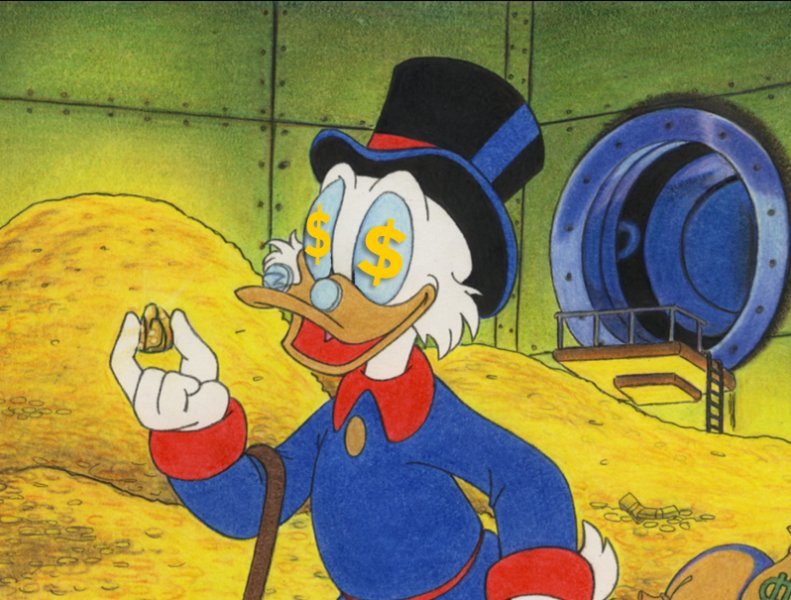
It means nothing, and GL was proof, as WB was planning multiple sequels before the film was even finished.
Nick: But the most unfortunate thing about the movie is the legacy I’m afraid it’s going to leave. While Marvel is going all-out cosmic and off the wall with Guardians of the Galaxy and the ongoing Thor solo franchise, it seems like Green Lantern may have scared Warner Bros off of the character.
The problem seems to be the line of thinking that the problem with the movie wasn’t the execution, but the concept. And that couldn’t be any further from the truth. In the right hands, I remained convinced that Green Lantern could be one of the greatest solo superhero franchises in history. There’s enough story there for a Star Wars-like six films and even more, especially given the numerous characters capable of taking center stage.
Maybe one day we’ll get the solo GL movie we’ve always wanted, but I’m truly afraid that we may never get a big screen Hal Jordan adventure worthy of the source material. Kyle Rayner or John Stewart, perhaps, but Hal may face an uphill battle.
Greg: It’s unfortunate, because he’s a great character and the Green Lantern mythos, more than any other in comics short of the X-Men, lends itself to multiple unique characters sharing similar powers and responsibilities. I’d love a Green Lantern franchise that would give Hal, John, Kyle and Guy Gardner chances to shine.
And it’s not like audiences reject space films. Both Star Trek and Star Wars are monsters at the box office, and Thor has already shown that audiences will accept outside-the-box superheroics.
Nick: As I’ve said before, after the Nova Corps makes its appearance in Guardians of the Galaxy and someone calls the Green Lantern Corps a ripoff of the Novas, I might blow a gasket.

Greg: Before either of us blows a gasket tonight, though, we should probably bring this to a close. To sum it up, I don’t think “Green Lantern” is a terrible movie. Check it out and you might get some enjoyment out of it. However, it’s about as by-the-numbers and mediocre as a comic book movie can get, and it leaves a lot of proverbial (and literal) money on the table by failing to fully realize a great mythology.
Nick: Yeah, while we’ve ragged on it, mocked it and made it sound as if we absolutely abhor it, we don’t. It’s not an awful movie, just a movie that is, in many ways, less than the sum of its parts. I don’t hate the film, but I hate what it represents — a lack of ambition when tackling what should be one of the most ambitious superhero projects to date. Watch it and judge it on your own merits, but I can’t really recommend it. If you’ve seen the myriad of superhero films from the 2000s, you’ve essentially seen Green Lantern.
And that, mercifully, brings a close to one of the longest things we’ve ever written. For the handful of you still with us, thanks for sticking it out. Join us next week for a much more positive topic, as we bring you the latest edition of Countdown. This time around, we’ll be giving you our five favorite animated comic book television shows.
Greg: As always, we welcome your feedback. Disagree with our take? Want to share your own experience watching Green Lantern? Hit us up on Facebook, Twitter (@gphillips8652 and @nickduke87) and through our Place to Be Nation email accounts, GregP@placetobenation.com and NickD@placetobenation.com.
